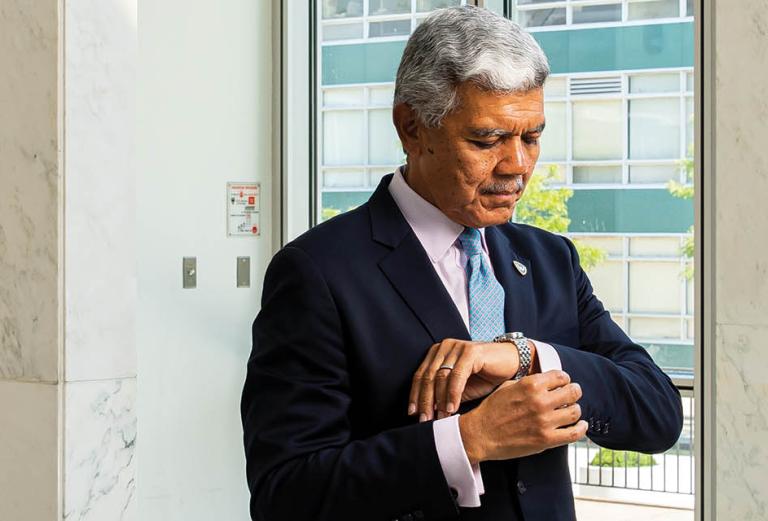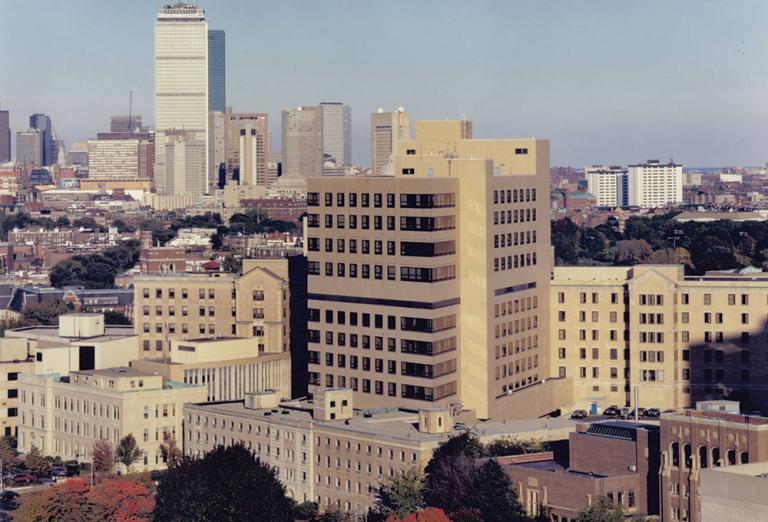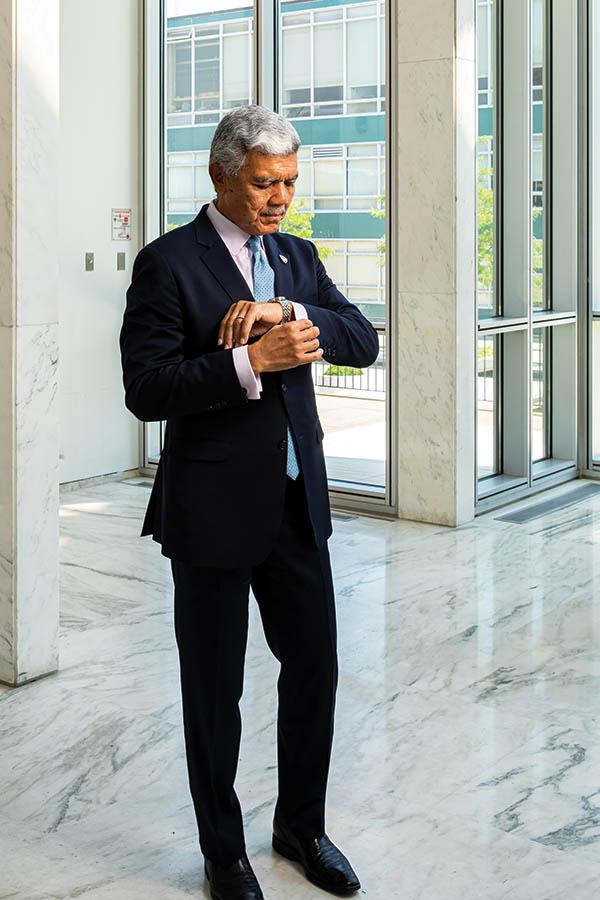In It for Good
A physician posits ways to keep the profession true to itself
The Business of Medicine Issue
- Perspective

During my surgery clerkship at Beth Israel Hospital, a clinical faculty member said to me, “Be good to medicine, and medicine will be good to you.”
I thought I knew what he was saying, but with the years, I’ve developed a deeper perspective.
Medicine is a noble profession guided by certain tenets, among them the Hippocratic oath, which has remained relevant for the past 2,400 years. Practice with humility and with empathy, always put the interest of the patient first, never break confidences.
The faculty member was instructing me to respect medicine.
By respecting medicine, medicine will provide rewards—not just financial security and professional standing but deep career satisfaction.
You may be somewhat skeptical about the latter point and note the physician burnout phenomenon and the increasing suicide rate among physicians.
I recognize this situation. The Physicians Foundation, in its 2018 Survey of America’s Physicians, reported that less than one-half of doctors reported they were satisfied with their jobs, that three out of four felt some level of burnout, and that 62 percent were pessimistic about the future of medicine. These results are startling.
But I remain optimistic about medicine. This perspective is fueled not only by my love of medicine and the feeling of incredible privilege I have to be a part of it but also by the realization that my path was atypical and not at all certain—that I was, perhaps, lucky.
My younger sister and I basically raised ourselves. Our parents were never around. Our mother was addicted to gambling, and our father to alcohol. We were subjected to experiences that no child should ever have to endure and, often, left to ourselves.
Neither of our parents had an opportunity to go to college. In fact, our mother had to leave school in the eighth grade to work and help support her adoptive family, and our father enlisted in the U.S. Navy immediately after high school.
I did not—and still do not—take for granted the opportunity I had to go to college and to medical school. At Harvard, no less.

I absolutely loved my time in medical school. To be able to look out into the future and know with certainty that I was going to have a career where I could positively impact people and also attain financial security was exhilarating.
However, I do understand that the practice of medicine has changed over the years and that there are many challenges to preserving aspects of medicine that we have historically cherished: the face-to-face interactions with patients, the ability to get to know them, and perhaps even to become a part of their lives; the relative autonomy we enjoyed in prioritizing patients’ interests, relegating all other interests as secondary; and the trust enjoyed by physicians individually and by the profession collectively.
Throughout history, medicine has experienced challenges, even disruptions, that have shaken its very foundation. But this current time, this technological age, potentially poses the greatest threats medicine has yet faced: keystrokes are replacing eye contact and artificial intelligence and robotics are reshaping human-to-human relationships of all types and levels in health care. Compounding these threats is the pervasive and increasing distrust the public has of major societal sectors—including health care.
Guideposts
“Be good to medicine, and medicine will be good to you.”
What exactly does this mean today?
During my years in medical school, I remember being inspired by the single word inscribed on the School’s shield: Veritas. Truth.
The word continues to inspire me.
In this time of fake news, alternative facts, and an overall distrust of science among some, there cannot be any daylight between medicine and truth. Truth must be the primary driver for our biomedical research, must form the basis for our patient-doctor relationships, must guide what we teach our students of medicine.
Medicine also must remain mission-focused, not profit-focused.
I fully understand that sound business practices and decision making are necessary to the delivery of medical care. As the saying goes, “no money, no mission.”
Without financial margins, the delivery of care to all who require it, as dictated by our Hippocratic oath, would be severely constrained. Current financial margins are thin, and health care delivery systems, partly to take advantage of economies of scale, have been getting larger through mergers and acquisitions. To gain access to capital markets, it is likely that for-profit systems will proliferate in the future.
That in itself is not necessarily bad. However, profit for the sake of profit is anathema to medicine and undermines the public’s trust.
Health care delivery systems, especially academic medical centers, have an obligation to serve their communities and invest in the public good.
To be good to medicine requires us to take a principled stand against profit as the primary driver of our health care delivery system—and as the primary motivation for our personal engagement in medicine.
To be good to medicine, we must steadfastly affirm our commitment to better health for our patients and our community as priority number one.
From three, one
Today, the arts and humanities are under siege, and some undergraduate curriculums have eliminated them altogether. Yet, medicine is both science and art.

In early 2018, the National Academies of Sciences, Engineering, and Medicine published the consensus study report, The Integration of the Humanities and Arts with Sciences, Engineering, and Medicine in Higher Education.
The opening paragraph of the report reads as follows:
“Albert Einstein once said, ‘all religions, arts, and sciences are branches from the same tree.’ This holistic view of all human knowledge and inquiry as fundamentally connected is reflected in the history of higher education—from the traditions of Socrates and Aristotle, to the era of industrialization, to the present day. This view holds that a broad and interwoven education is essential to the preparation of citizens for life, work, and civic participation. An educated and open mind empowers the individual to separate truth from falsehood, superstition and bias from fact, and logic from illogic.”
I contend that today there is no discipline for which these sentiments are more important than medicine.
Many may agree that a focus on math and the sciences has overshadowed the arts and humanities as a foundation for the training of physicians. This emphasis is understandable. Science is a fundamentally important conceptual underpinning for medicine. But it is only one leg of a three-legged stool.
In 2011, the Association of American Medical Colleges (AAMC) published Behavioral and Social Science Foundations for Future Physicians. It noted that “a complete medical education must include, alongside the physical and biological sciences, the perspectives and findings that flow from the behavioral and social sciences.”
Behavioral and social sciences: the second leg of the stool.
Currently, in collaboration with the National Endowment for the Humanities, the AAMC is developing a report that adds the arts and humanities as a third dimension that informs the work of a good health care practitioner.
I cannot overemphasize the importance of this third leg as a foundation of medicine and health care. In countries with modern medical technology, like the United States, health care systems are facing enormous difficulties in meeting demands such as distributing resources equitably and providing quality care to a large number of patients. Overlaid on these issues are the moral dimensions of how much care to provide to those who are terminally ill and to those who are unable to pay.
Addressing such challenges requires qualities of sympathy, empathy, compassion, patience, and caring—all implicit in humanism in medicine.
In 2007, the Institute for Healthcare Improvement introduced its triple-aim framework that set a goal of simultaneously improving the patient’s experience of care, improving the health of populations, and reducing the per capita costs of health care.
Humanism positively affects all three goals. And, when considering physician dissatisfaction and burnout, recent research demonstrates that humanism in medicine supports a fourth aim: improving the work life of health care practitioners.
Being good to medicine means that despite the relentless advances of technology and science, we must embrace the arts and humanities as fundamental to the preparation of physicians and the preservation of humanism in our profession.
The picture of greatness
To be good to medicine, we also must ensure it can draw upon the talents of all segments of our diverse population. For me, this point is personal.
We must do more to ensure that all segments of the public are represented in our profession and that biases, even if unintended, do not systematically exclude persons of certain population groups.
Although it is encouraging that the proportion of women in our medical schools is now about 50 percent, more must be done to ensure that they have equal access to all the postgraduate training opportunities afforded men, that they are recognized equally for awards, that their pay is equal to that of their male counterparts, and that they are supported for advancement and promotion to the higher academic and administrative ranks.
In failing to ensure equality and respect, we are not being good to medicine. In fact, we cheat medicine.
One of the great strengths of our society has been the diversity of its people. Yet the goal of equity in medical education and training, particularly for our historically underrepresented populations, has been elusive.
Some of us in academic medicine feel we have succeeded if we have underrepresented populations enter primary care and practice in underserved communities. This is indeed laudable.
However, as a minority physician who specialized in the treatment of glaucoma, served on academic faculties, and held substantial roles leading medical schools, health science centers, and universities, I reject that definition of success.
We must make sure that underrepresented populations take part in all the wonderful opportunities afforded by medicine, whether in primary care or specialty care, administrative leadership or research.
Let’s be good to medicine. Let’s aspire to the ideal of veritas, stay true to our ages-old mission to heal and improve health, embrace the arts and humanities as a foundational element in the training of compassionate physicians, and recommit to achieving diversity and equity throughout the breadth of our profession.
If we do these things, medicine will be good to us.
M. Roy Wilson, MD ’80, is the president of Wayne State University. In 2018, while chair of the AAMC Board of Directors, he delivered an address titled “The Most Important Lesson I Learned in Medical School.” This article is an edited version of that address.
Image: The Ruth and David Freiman Archives at Beth Israel Deaconess Medical Center (hospital photo); David Lewinski (portrait)